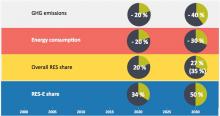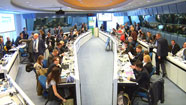On 5 April 2016 the JRC presented the interactive and collaborative online European Energy Efficiency Platform. This beta platform is conceived to fill the gap opened by scattered data and fragmented knowledge resulting from a rapidly growing energy efficiency market. It is expected to be both a one-stop shop for information retrieval and a meeting point for experts to exchange data and reduce redundant activities.
Renewables in the EU: the support framework towards a single energy market
The need to integrate higher shares of renewables in the EU energy sector brings into discussion the way the renewable technologies/sources have been supported to date. Support schemes are currently the major drivers for investment in the EU electricity sector, while investments in grid assets are driven mainly by regulation that guarantees investors a reasonable return on equity. The support price-based scheme is mainly determined from administrative procedures based on the main indicators such as deployment targets and costs of renewable generation.
Investments in RES are facilitated by a predictable regulatory framework that reduces the risk for investors and hence the cost of capital. However, incentives must be reduced in line with falling technology costs, in order to avoid over-compensation and rising energy prices.
In 2015, when the most recent set of renewable energy progress reports were submitted, more than 1300 support measures (economic, financial, regulatory, administrative, support) for the development of renewables were in place in the EU countries since 2005.
The support schemes based on administrative procedures have been very successful in scaling up renewable energy deployment throughout Europe. Feed-in tariffs (FIT) and feed-in-premiums (FIP) in the form of grants, bonuses, premiums, etc. are the main support schemes for the deployment of renewable technologies in the EU electricity sector; still in 2015 they were applied in 24 EU countries.
Currently the support levels based on levelised cost of energy have been the most widespread design feature for FIT/FIP schemes throughout the EU countries. Depending on the circumstances in individual countries the implementation of these support schemes is still an ongoing process. The support given using the premium awarded on top of energy market prices expose producers to market risks affecting balancing responsibilities and market price.
The introduction of renewables auctions in some EU countries, replacing administratively set feed-in-tariffs/feed-in premiums/quota, has led to considerably lower prices and very high realization rates. The auction experience in some EU countries as Germany, France, UK, Spain shows that this form of support turn out to be faster and more flexible than administrative procedures in adjusting support levels to cost reductions. To meet additional policy goals, the auction design needs to combine the right elements for the specific market context.
The adoption of effective cost regulation measures aiming at a clear bearing and sharing grid transmission and distribution costs seems to be less of the priority of EU countries. Despite the improvements over years of the administrative procedures for removing of regulatory and non-regulatory barriers when promoting renewable energy a bulk of EU countries lack the implementation of online applications and shortening the times regarding to the connections requests.






Comments
Re-edition